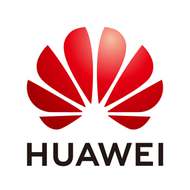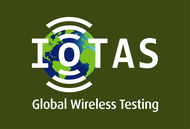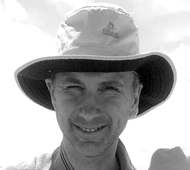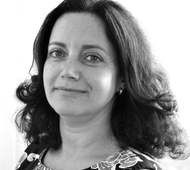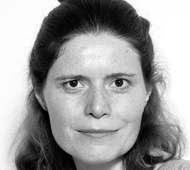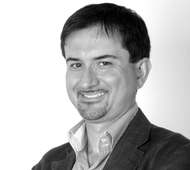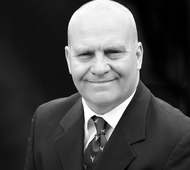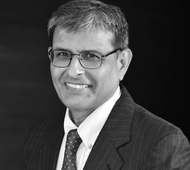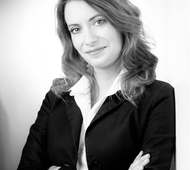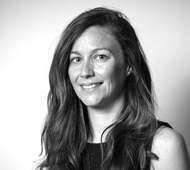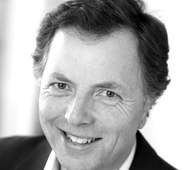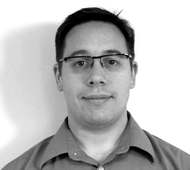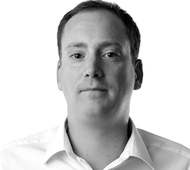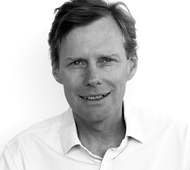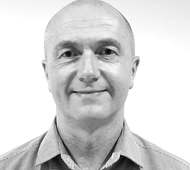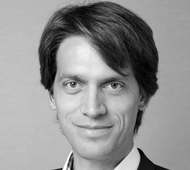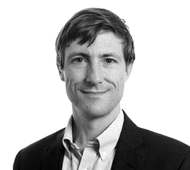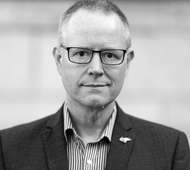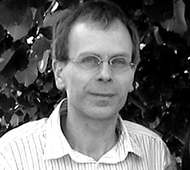Ben Allen
- Director, System Modelling, OneWeb
Professor Ben Allen is Director of System Modelling with OneWeb and Visiting Professor at the University of Surrey. His career has spanned academia and industry, including as a Royal Society Industry Fellow with the University of Oxford and Network Rail. He has led numerous R&D activities relating to satellite communications as well as telecoms for railways, several of which exhibited state-of-the-art advances. Over the years he has published numerous papers and several books on radio and telecommunications research developments. He is a Chartered Engineer, Fellow of the Institution of Engineering & Technology, Institute of Telecommunications Professionals, and the Higher Education Academy.
Betty Bonnardel-Azzarelli
- CEO & Founder, Farmer Charlie
Betty is CEO and Founder of Farmer Charlie, an information gateway to farmers around the world. www.farmer-charlie.com is a spin-off of www.AB5Consulting.com, delivering innovative solutions in telecoms, tech, energy, space and satellite. An award-winning Fellow and Chartered engineer, Betty is recipient of a British MBE. She uses her experience and skills in telecoms, tech and innovation, business and strategy to lead Farmer Charlie’s team towards connecting remote farmers around the world, bringing a complete system of data analytics, local weather and IoT system, using satellite technologies and solar power. She holds two Masters’ in Science in aeronautical and space engineering (including telecoms), and a MBA. Betty is a certified project manager. Betty is also engaged in society; she is a school governor and participates regularly to school fairs and events to promote engineering with boys and girls.
Julie Bradford
- Head of techno-economic analysis, Real Wireless
Julie has worked in the wireless industry for over 15 years. At Real Wireless, she is a thought leader in 5G business case analysis including understanding 5G use cases, quantifying (in financial terms) the operational and socio-economic benefits of 5G services and understanding network dimensioning and cost implications under 5G virtualised networks.
She has most recently been working with city councils around their wireless strategy and related Green Book outline business case development. She also led Real Wireless’ techno-economic analysis on the EC Horizon 2020 5G-MoNArch project. Inspired by the project’s smart sea port testbed constructed by HPA, Nokia and DT in the Port of Hamburg, this analysis included quantifying the operational benefits of 5G to port authorities and other port users and the cost implications of delivering these industrial grade wireless services from existing mobile infrastructure via network slicing supported via the virtualised 5G-MoNArch network architecture.
Previously, Julie was Communications Engineer at QinetiQ UK, consultant at PA Consulting UK, and Senior Systems Engineer for Airvana UK. In addition to working at Real Wireless, Julie is a CW board member and champion for the CW Virtual Networks Special Interest Group (SIG).
Henry Chor
- A2G Solution Lead, Nokia
Henry Chor is the A2G solution lead inside Nokia. With over 20 years of experience in Telecommunications network design and technical consultancy. Henry has been instrumental in many private wireless projects: From advocating the LTE train-to-ground vision, advising the A2G network architecture for the pan-European operation, to turning the first LTE public safety air-to-ground solution from inception into realization.
Previously a senior BBC engineer and lecturer at Salford University, Steve has many years of experience in software and electronics, from RF telemetry and low-power radio bridges to the multi award-winning Tag McLaren AV processors, EPOS & smart energy meters. Steve founded two IoT companies and led the development team of ACIS (now Vix Technology), growing them to become the UK’s largest bus telematics company.
Fabrizio De Paolis
- 5G/6G Implementation Manager, European Space Agency
Fabrizio De Paolis received the Laurea degree in Electronic Engineering and the PhD in Applied Electromagnetics from “La Sapienza” University of Rome, Italy. He started his career in the space industry, where he was involved in the modelling and design of RF equipment and subsystems for space applications. He was also the technical lead of commercial satellite programs for worldwide prime contractors. Since 2009, he has been with the European Space Agency across various sites, where he was initially supporting industrial and R&D activities related to RF equipment and technologies. He was later responsible for the initiation, negotiation and control of large and high-risk development contracts in the areas of ground/user segment RF and antennas. He is currently an Implementation Manager in the 5G/6G Strategic Program Line, covering the strategy, coordination and implementation of development programmes involving converged satellite and terrestrial 5G/6G networks, with a high degree of innovation, in terms of technologies, services and business models.
Steve Gibson
- Managing Director, AST SpaceMobile
Steve brings extensive experience in the space industry and contract management. Most recently, at Lockheed Martin’s largest UK facility, he was responsible for all business development for space activities, leading many international space program pursuits from the UK.
Prior, he held various roles across Europe in the space division of the Airbus Group, including at their subsidiary, Surrey Satellite Technology Ltd. (SSTL). While there, he earned the inaugural business excellence award for his innovative commercial work on the Chinese DMC3 program.
He is a member of the Royal Aeronautical Society and has been a member of the UK Space Agency Space Science Programme Advisory Committee. Steve was also the vice chairman of the Space Science and Exploration Committee for the UK Space Trade association.
Steve holds an MBA from The Open University and a BA in business studies from Coventry University and is currently an honorary visiting professor at the University of Leicester in the Physics and Astronomy Department.
Sriram Jayasimha
- Chief Scientist, Commercial Applications, AST SpaceMobile
Sriram brings a 30-year successful track record of IP creation and product design for the global telecommunications markets. He has authored 42 peer-reviewed journal and conference publications in an array of digital-signal-processing applications, including: mobility, satellite communications, modem, VLSI and instrumentation signal processing.
A named inventor on 21 U.S. and European patents, Sriram was a fellow of the Center of Advanced Engineering Study at Massachusetts Institute of Technology (MIT). He earned his B.Tech and M.S. degrees in electrical engineering from the Indian Institute of Technology, Madras and Rensselaer Polytechnic Institute.
Maria Kalama
- CEO, biotIP
Visionary business leader, with a 20 year career in the space sector, which remains a key passion. Former Business Development Director of Lacuna Space, a satellite Internet of Things service provider. Currently CEO of a biosensor start-up bringing the customer perspective into this event.
Maria Lema
- Co-Founder, Weaver Labs
María Lema is a Co-Founder of Weaver Labs, a Telecoms-software company building a blockchain-based network management tool to open up access to connectivity. Maria leads commercial and strategy activities, as well as building partnerships and handling all company operations. In addition to having a Ph.D. in Telecoms, María has also led all operational activities at King's College London in the 5G Tactile Internet Lab powered by Ericsson.
María often disseminates her work at many important events within the industry and her work has been covered by many top-level media such as CNN business, The Telegraph Business Review, Raconteur, and The Guardian.
She was recently listed as one of Capacity Media's 20 Women to Watch in Telecoms 2022 and was shortlisted Entrepreneur of the Year 2022.
As head of telecoms and mobile at Cambridge Consultants, Derek leads the company’s collaboration within the sector. Central to Derek’s role at Cambridge Consultants is helping create breakthrough innovation that transforms the delivery of high-performance communication for their partners; from mobile carriers and ISPs, to vendors and component manufacturers. With over 20 years’ experience in mobile technology, Derek has held a range of multinational senior management roles and has a wealth of expertise across all generations of mobile and broadband technology, including LTE-A and 5G. Derek holds a PhD in telecommunications from the University of Bristol.
Anthony Magee
- Senior Director, Global Business Development, Adtran
Anthony Magee is responsible for driving ADVA’s mobile solutions strategy globally. He is an experienced technologist and business development professional, with 20 years in the telecommunications industry. Anthony has been involved in research and collaboration projects with academic, technology partners and customers relating to mobile architectures including 4G, Small Cells, LTE-A and 5G.
Prior to joining ADVA, Anthony worked as a technologist with UK Government. His activities within ADVA have included Hardware and Systems Engineering before reaching Principal Engineer in our Advanced Technology team. He has a first-class honours degree in electronic and electrical systems engineering from Leeds Metropolitan University.
Andy Marr
- Director Consulting, CGI
Andy leads CGI’s 5G programmes in Space and Defence. His team have delivered the European Space Agency’s 5G/6G Hub, showcasing how space can enable future generations of telecommunications and connected applications, CGI’s Carnot-Sat hybrid networks planning tool, and their hybrid networks Management and Orchestration toolset, underpinned by CGI’s 5G Accelerator facility in Leatherhead.
Andy has 15 years’ experience working in the Space industry, delivering critical solutions for customers including OneWeb, SES, Inmarsat and AST SpaceMobile.
Paul Morris
- VP RF and Communications Business Unit, EnSilica plc
Paul has 30 years’ experience working on various wireless and semi-conductor systems most recently promoting semiconductors for Ka-band beamformers for satellite connectivity and growing EnSilica’s business. He gained his semiconductor experience from CSR’s early days through to its trade sale to Qualcomm where he was Senior Director, Technology covering a range of mobile, security, wireless audio and automotive products. He enjoys growing international technology businesses and has lived and worked in France and China. Paul is active in various Cambridge local networks including CW and Cambridge Network and has acted in advisory roles for start-ups.
Mike Page
- Fellow Engineer, Radio Design
Mike is a Fellow Engineer at Radio Design specialising in RF systems, working closely with operators to develop optimal site design solutions. He has 30 years of experience in the cellular industry gained at Nortel, Ericsson, Filtronic and Radio Design. Mike holds BSc (Hons) and PhD degrees in Telecommunications from the University of Hull and an OU MBA.
Joey Pan is Huawei’s Director of Industry and Public Affairs. In this role he is responsible for developing partnerships with academic, technical and business organisations in the UK to promote joint innovation and sustainable growth in the ICT sector. Joey is also a Board Director of techUK.
Over the past 15 years, Joey has held different positions within Huawei, both in China, Africa and Europe. Prior to this he was Vice President of Global Government Affairs in charge of relationships with key international organizations.
Luc Perard
- Senior Vice President of IoT Business, Eutelsat SA
Luc Perard has 20 years of continuous experience in the Internet of Things (IoT) industry, during which he has driven global strategy, sales and business development at Siemens, Jasper, Vodafone, Accenture, PTC and now Eutelsat, one of the world's leading commercial satellite operators. Mr. Perard currently serves as Eutelsat's Senior Vice President of IoT Business. In this role, Mr. Perard defines and executes the company's IoT commercial and go-to-market strategies globally. He leads the IoT business development activities and forges key partnerships with the most prestigious IoT solution providers and network operators across the world. Mr. Perard has studied at Harvard Business School in Boston, MA, McGill University in Montreal, Canada, and holds a Master of Science in Industrial Engineering and Management from Grenoble Institute of Technology in France.
Jaime Reed
- Vice President, Space Data Platforms and Applications, CGI
Jaime loves working with clients to invent the Space services of the future. He leads Space Data Platforms and Applications team in the UK for CGI, the largest IT and business consulting company in the space sector. Using SatCom and Remote Sensing technologies his team work on topics like smart cities, connected transport, AI, 5G, geospatial applications and HAPS. Jaime has spent 20 years in the space industry as a systems engineer and project manager working on some of the most complex ground, satellite and software systems for clients like the European Space Agency and NASA. Jaime has a Doctorate in Atmospheric, Oceanic and Planetary Physics and is a Chartered Engineer.
Andy Sutton
- BT Fellow & Principal Network Architect, BT
Andy Sutton is a BT Fellow and Principal Network Architect for Wireless Access. The wireless access domain includes 4G/5G RAN architecture and mobile backhaul/xhaul, along with microwave and millimetre wave radio systems, and satellite communications. Andy holds an MSc in Mobile Communications from the University of Salford and has over 35 years of experience within the telecommunications industry. Andy’s current research interests include advanced RAN coordination techniques, including C-RAN and OpenRAN, optical fibre and radio based backhaul/xhaul, along with LEO satellite communications and High-altitude Platform Systems (HAPS), all in the context of building resilient heterogeneous networks. Andy holds the post of Visiting Professor of Telecommunications at the University of Liverpool and the University of Salford, he is a Chartered Engineer and holds Fellowships from the IET, ITP and BCS. Andy sits on the editorial board of the ITP Journal and is a CW SIG Champion for eMBB and Wireless Heritage.
Dr Ian Wassell joined the University of Cambridge Computer Laboratory as a Senior Lecturer in January 2006. Prior to this, he was with the Department of Engineering for six years. He received the PhD degree from the University of Southampton in 1990 and the BSc., BEng. (Honours) Degrees (First Class) from the University of Loughborough in 1983. He has in excess of 25 years experience in radio communication systems gained via positions in industry and academia and has published more than 200 papers. His research interests include broadband wireless networks, wireless sensor networks, radio propagation, coding, communication signal processing, compressive sampling, and image processing and classification.
